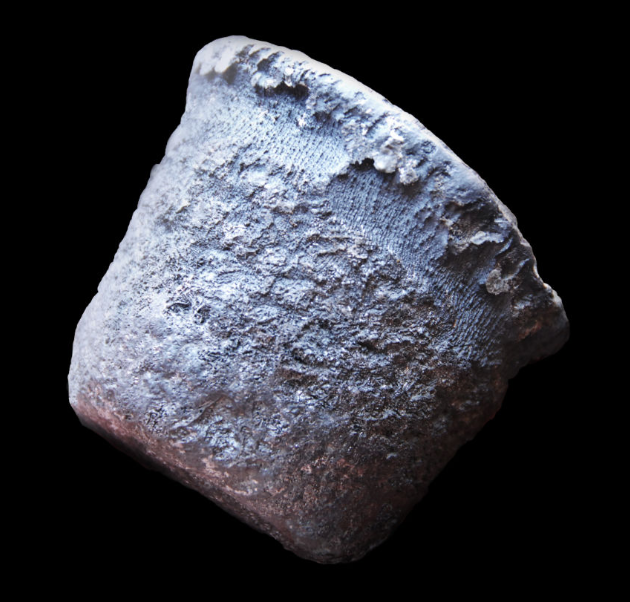Forge Welding Techniques Explained: Damascus
Damascus steel is possibly one of the most well-known terms among bladesmiths and knife collectors alike. With a beautiful pattern and unmatched performance, blades made with this steel carry a mystique that has fascinated and puzzled historians for centuries. Interestingly, and largely unknown by novice bladesmiths, what passes for Damascus steel today is much different than it was in the past. So, what is Damascus steel, exactly, and how does ancient Damascus steel compare to it’s modern day counterpart.
(Image credit: Britannica)
Named for the ancient Persian city where it was first discovered by Europeans, Damascus steel blades were incomparable in quality and design, even holding a deadly edge after extensive use. They are perhaps best known, however, for the mesmerizing watery pattern inscribed on the blade during the forging process.
Historians trace it’s roots back to Southern India during the 1st Millennium, BC, where ancient bladesmiths would smelt Wootz, a high carbon steel, in furnaces followed by cooling through the addition of plant matter and flux materials like glass. Once the steel was cool, it would then be sent along trade routes to the Middle East for fabrication into swords and knives.
(Image credit: Wootz Legend)
These blades aren’t just beautiful; they’re deadly. Legends attributed to Damascus swords claimed they were able to cut through rifle barrels with a single swing and could slice a feather in midair. Regardless of the veracity of these legends, it only serves as an indicator of Damascus’ enduring strength and quality.
“These blades aren’t just beautiful; they’re deadly.”
(Image credit: Wootz Legend)
But how, exactly, was this mysterious steel able to be crafted with it’s trademark watery pattern? The answer can be explained with chemistry. Wootz has a unique composition which made it perfect for crafting deadly blades. Typical steel requires an extremely high temperature to liquify. The high concentration of carbides in wootz, however, allowed it to liquify at a lower temperature easier for forging. Wootz also had a lower amount of slag than was typical at the time, making it the preferred material for bladesmithing. Slag is simply waste matter and imperfections in melted steel. Wootz steel, once processed, was incredibly pure and perfectly balanced. The trademark flowing pattern of these blades was a direct result of the chemical reaction of the pure wootz melting and bonding during the forging process.
RELATED:
BLADESMITHING THROUGH THE AGES: THE BRONZE AGE
Europeans who encountered Damascus blades were amazed at their quality and enduring sharpness, yet were puzzled for centuries as to their origin. With limited trade routes at the time, Europeans had little access to wootz steel leaving them clueless as to it’s method of production. Knowledge of this technique was guarded closely, being passed down to only a select few in order to maintain secrecy.
However, as the ages passed, the original process of casting wootz was almost completely lost to time. By the early 20th century, production of Damascus blades had all but ceased, leaving more modern bladesmiths in the dark. Historians suggest this could be due to the breakdown of trade routes, colonial British suppression of industry, or a loss of knowledge due to the secretiveness of the technique.
“The method of pattern welding steel has been able to replicate the process with impressive results.”
To date, modern bladesmiths struggle to perfectly replicate these blades in a way that is identical to the pure original design. However, the method of pattern welding steel has been able to replicate the process with impressive results. Popularized during the 1970s, pattern welding, or billet welding, involves forging together pieces of alternating steel. Once the steel is heated, it is pressed into a lump which is cut and stacked into layers, repeating the process as necessary until a Damascus billet is formed. This layering process is painstaking, sometimes being repeated hundreds of times until the billet is ready to be forged into a blade.
RELATED:
BLADESMITHING THROUGH THE AGES: EARNING THEIR NAME
Although the term “Damascus” is used interchangeably, the resulting blades are very different. While the Wootz in original Damascus style resulted in a strong, durable blade as effective as beautiful, the patterns created using modern Damascus techniques are largely decorative and offer little to no functional advantage to mono-steel blades.
Today, blades labeled as Damascus are certainly fine pieces of craftmanship, but are still replicas of their ancient cousins. A less-than-perfect version of Wootz material is available, though not many bladesmiths are willing to use it due to the high cost and time required to produce Wootz steel adequate for a blade. Additionally, contemporary Wootz is certainly not exactly the same as it was back during it’s heyday in ancient India or Persia. In time, the difficulties in forging Wootz blades may be improved enough to allow for more frequent production. Until then, however, we’ll make due with the modern-day equivalent.
Stay tuned for our next installment in our series Forge Welding Techniques Explained where we deep-dive into another blade style, San Mai!
About the Author
More from BRUTE de FORGE










